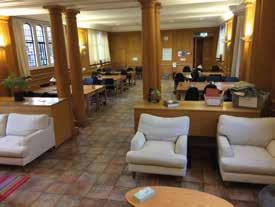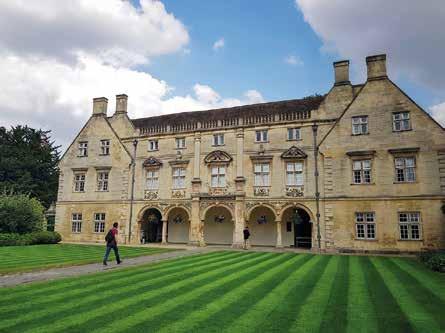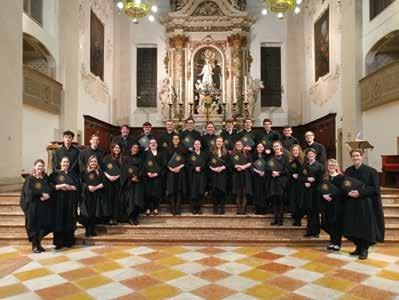VII
Gardens
Si hortum in bibliotheca habes, nihil deerit. If, as Cicero states, one only needs a library and a garden, then soon the students of Magdalene will surely want for nothing: our new Library Building is well under progress in the Fellows’ Garden. Despite the loss of our orchard area (the site of the new library), the new build has given us the opportunity to develop some new areas of the gardens, especially in the Master’s Garden. A new bed has been planted with a mixture of herbaceous plants and grasses including agastache, sedum, salvia, echium, echinops, miscanthus and calmagrostis. We have used a colour theme of pink and blue which will mature in the coming years to give a fine backdrop for garden parties, May Balls and other functions. We intend to plant a new orchard area this autumn in Buckingham Court. On the southern side of the garden, adjacent to Second Court, we have begun to plant a Japanese themed border. A backbone of various Japanese maples includes Acer palmatums‘Bloodgood’,‘Bi-Hoo’,‘Orange Dreams’and‘Seiryu’. These have been selected for their wonderful leaf shape but most of all for their fabulous autumn foliage and coloured stems. Among the under-planting is Ophiopogon japonica, Primula japonica, Athyrium nipponicum pictum (Japanese painted fern) and the handsome Cyrtomium falcatum (Japanese holly fern). Two new Japanese cherries have also been planted to add to our increasing collection of these fine trees. Prunus Horinji was brought to Western gardens by Collingwood Ingram at the start of the twentieth century, when interest in Japanese flowering cherry trees was fashionable. He considered this to be among the most beautiful of the cherries, and is associated with a temple of the same name in Kyoto. Although possibly a very old variety, it does not seem to have been widely grown in Japan. It is notable for its large semi-double white flowers, which have a faint tint of pink, and should mature into a fine tree. Further along the border is Prunus ‘BeniYutaka’. with its appealing large double pink flowers which darken in the centre during the flowering period and has gorgeous red and scarlet autumn colour. Beni-yutaka is one of a great number of flowering cherries developed by cherry enthusiast Masatoshi Asari in Hokkaido, the northernmost main island of Japan – known collectively as Matsumae cherries. It was released in the 1960s. The team has also continued the development of the planting in the front garden of the Master’s Lodge. Inside the perimeter wall we have planted Chimonanthus praecox, Greek for winter flower, and found in several regions of China. It is wonderfully scented in late winter. Also planted here and endemic to China, is Heptacodium miconioides. Chimonanthus was discovered in 1907 growing on mountain cliffs at 'Hsing-Shan Hsien' in the west of Hubei province, central China. Considered rare even at that time, only nine populations are known to remain in the wild, all of them in Anhui and Zhejiang provinces and threatened by habitat 38















